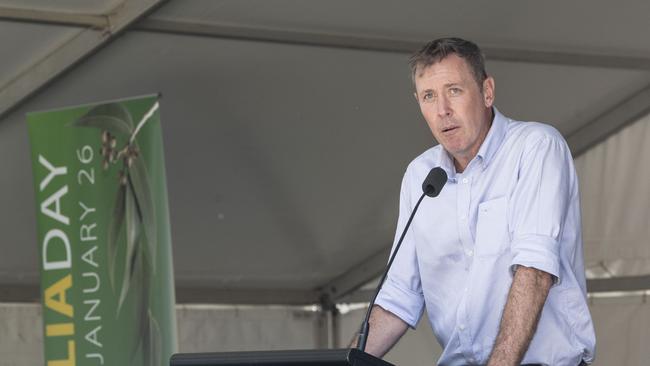End Inland Rail at Toowoomba instead of Brisbane, save $9bn, proponents say
Ending the Inland Rail line at Toowoomba, instead of Brisbane, would save $9bn – about a third of the project’s cost, proponents say.

Almost a third of the blown-out cost of the $31.4bn Inland Rail project could be saved if the freight line ended at Toowoomba, as advocated by the region’s federal MP.
Under the existing plan, the 1700km rail line would run from Melbourne to the Brisbane suburb of Acacia Ridge.
From there, freight could be loaded on to smaller trains or trucked to the Port of Brisbane.
Engineering challenges posed by the Toowoomba range mean the 150km section between Toowoomba and Acacia Ridge would cost about $9.56bn, despite being less than one-tenth of the total distance of the track.
Liberal Groom MP Garth Hamilton said a better option was to end the line at Toowoomba, where it could be distributed to the port or populous southeast Queensland corner via trucks or existing freight rail.
A review of the project by Kerry Schott for the federal government, handed down last week, found the poorly managed project was facing a delayed completion date of 2031 and had doubled in cost in two years to $31.4bn.
“If cost and time are putting pressure on the project, pause it at Toowoomba and we can prove it up,” Mr Hamilton said.
“We’ve just built the second range crossing, we’ve got the Warrego Highway (to Brisbane), you can run trucks in.”

The privately funded InterLinkSQ terminal under construction near Toowoomba could be used to transfer freight to existing rail freight lines, trucks and nearby Wellcamp airport.
“What makes sense is to stop at Toowoomba and distribute goods from there,” Mr Hamilton said.
The Toowoomba to Acacia Ridge section has faced fierce opposition from farmers concerned about the effect on prime agricultural land in the Lockyer Valley and from suburban Brisbane communities worried by the impact of regular 1.8km-long trains.
Dr Schott’s report recommended the project end at a yet-to-be built intermodal terminal at Ebenezer, a rural area west of Ipswich 90km from the port.
The report said sending the 1.8km-long double-stacked trains through Brisbane was not feasible and a terminal outside the city was needed to transfer cargo to smaller trains or trucks.

The Ebenezer option would still require the rail line to navigate the topographically challenging Toowoomba range at considerable cost.
Ending the line at Ebenezer, as opposed to Acacia Ridge, would save $1.56bn as opposed to $9bn in savings if the line ended 85km further west at Toowoomba.
“It works just as well finishing up here as it would at Ebenezer,” Mr Hamilton said.
“Right now, running to Ebenezer is a train to nowhere. Here, you’ve got an intermodal terminal being built, three highways and access for B-doubles to the Brisbane port.”
InterLinkSQ general manager Blair Batts said the facility was “one left turn” from the Warrego Highway and surrounded by undeveloped industrially zoned land.
“Toowoomba gives the opportunity to develop significant end-of-line capacity initially to justify whether you go down the hill to Ebenezer or Acacia Ridge,” he said.
The Schott report said consideration had been given to creating the intermodal terminal at Toowoomba but it was “not pursued due to its significant distance from Brisbane, the low level of interest from industry generating concerns about the level of competition, and concerns about the additional road freight traffic this option would generate on the Warrego Highway.”




To join the conversation, please log in. Don't have an account? Register
Join the conversation, you are commenting as Logout